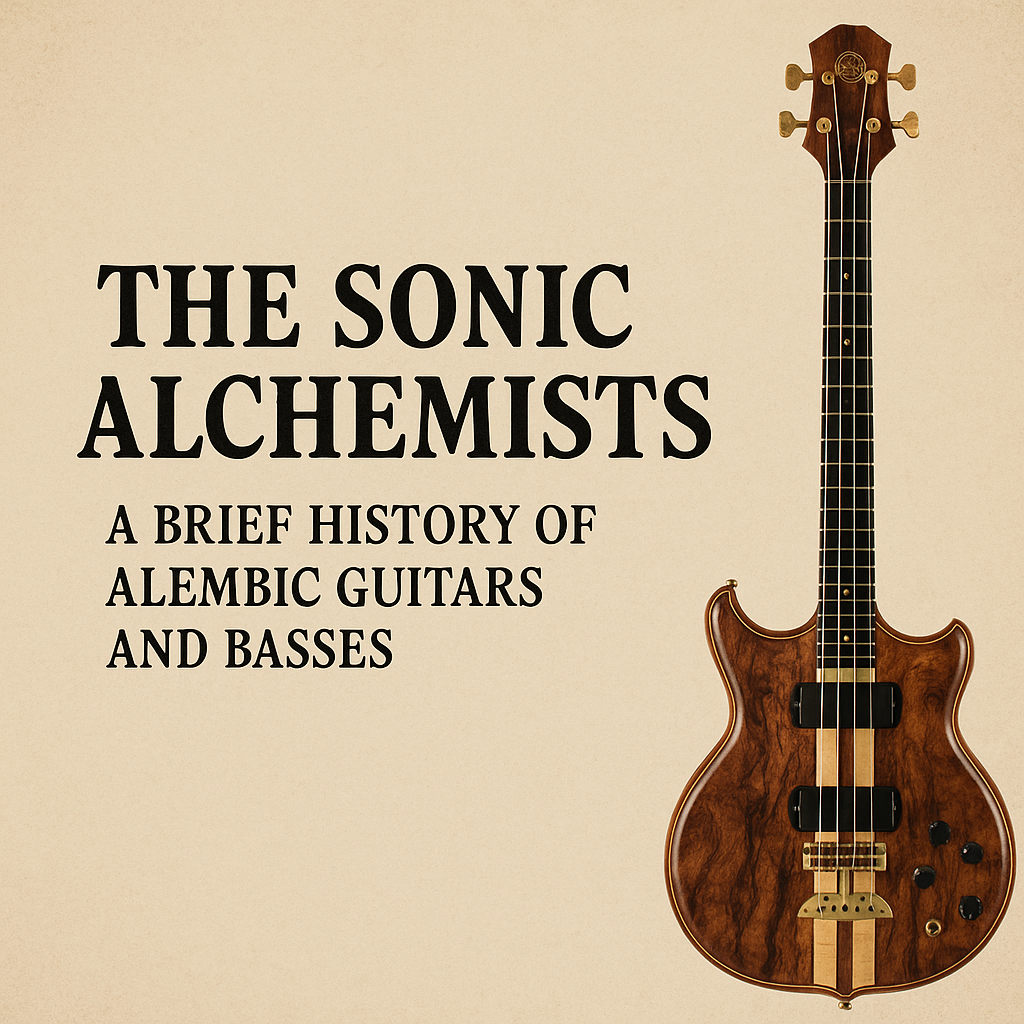From the Lab to the Stage: Alembic’s Origin Story
Alembic began not as a guitar company, but as an audio consulting firm founded in 1969 in San Francisco by Ron Wickersham, an electronics engineer formerly of Ampex (the company that built the first multi-track recorders); his wife Susan Wickersham; and Rick Turner, a skilled luthier. Their initial mission was to improve the live sound of the Grateful Dead, who were constantly pushing the boundaries of what was possible in concert audio.
The name “Alembic” refers to an ancient distilling device—a poetic nod to their goal of distilling pure tone from raw electric sound.
Innovation in Every Frequency
Alembic’s first breakthroughs weren’t in guitars but in electronics and pickups. They rewired the Dead’s instruments and used low-impedance pickups with onboard preamps to achieve studio-quality fidelity on stage. The goal: a clean, wide frequency range with minimal noise.
This led to their first instruments—highly customized basses and guitars with exotic woods, brass hardware, active electronics, and unparalleled tonal clarity. In 1971, Alembic built their first complete bass guitar for Jack Casady (Jefferson Airplane, Hot Tuna). But it was Phil Lesh of the Grateful Dead who became the company’s sonic muse.
The Grateful Dead: Alembic’s First Champions
Phil Lesh’s custom Alembic basses helped define the Dead’s famed “Wall of Sound” PA system in the mid-1970s. His instruments featured active EQ, filters, and even quadraphonic outputs, allowing individual strings to be sent to different channels in the mix.
Guitarist Jerry Garcia also became a prominent user, particularly known for his custom Alembic instruments like the “Wolf” and “Tiger”, although these were later refined by Doug Irwin who originally worked with Alembic.
David Gilmour and Alembic’s Studio Role
While most closely associated with his Fender Stratocaster, David Gilmour employed Alembic preamps and outboard gear during the recording of Pink Floyd albums, particularly on The Wall and The Final Cut. His Alembic F-2B preamp—based on the Fender Showman—became a studio staple, helping him sculpt his atmospheric tones.
Gilmour’s use of Alembic highlights the brand’s dual identity—not just as a builder of elite guitars and basses, but also as a trusted name in audiophile-grade electronics.
Stanley Clarke and the Boutique Bass Revolution
In the 1970s, Stanley Clarke became one of Alembic’s most iconic endorsers. His signature tone and virtuosic playing elevated the bass to a lead instrument in jazz fusion. Clarke’s short-scale Series I Alembic basses, with their ornate bodies and surgical tone, set the standard for custom boutique basses.
Other players soon followed: John Entwistle of The Who, John Paul Jones of Led Zeppelin, and Greg Lake of Emerson, Lake & Palmer all wielded Alembics at some point, drawn to their clarity, sustain, and visual flair.
Alembic Today: Still Crafting Sonic Sculptures
Alembic remains a family-owned company, hand-building each instrument in Santa Rosa, California. Every bass and guitar is made to order, featuring exotic woods like cocobolo, purpleheart, and zebrawood; brass tailpieces; and custom electronics. Their instruments are as much art pieces as tools for sonic exploration.
Prices for new builds often start above $10,000, but for Alembic devotees, the cost is secondary to the craftsmanship and tone.
Legacy: Where Science Meets Soul
Alembic may not have the mainstream profile of Fender or Gibson, but its impact on high-end instrument design is immense. They pioneered concepts now common in the boutique market: active electronics, multi-laminate neck-through designs, and ultra-custom builds. For players chasing ultimate tone and fidelity—from psychedelic rockers to jazz innovators—Alembic remains the gold standard.
Notable Alembic Players:
-
Phil Lesh (Grateful Dead)
-
Jack Casady (Hot Tuna)
-
Stanley Clarke
-
John Entwistle (The Who)
-
Greg Lake (ELP)
-
David Gilmour (via studio preamps)
-
Jimmy Johnson (James Taylor)
-
Jason Newsted (Metallica, post-Alembic era)









